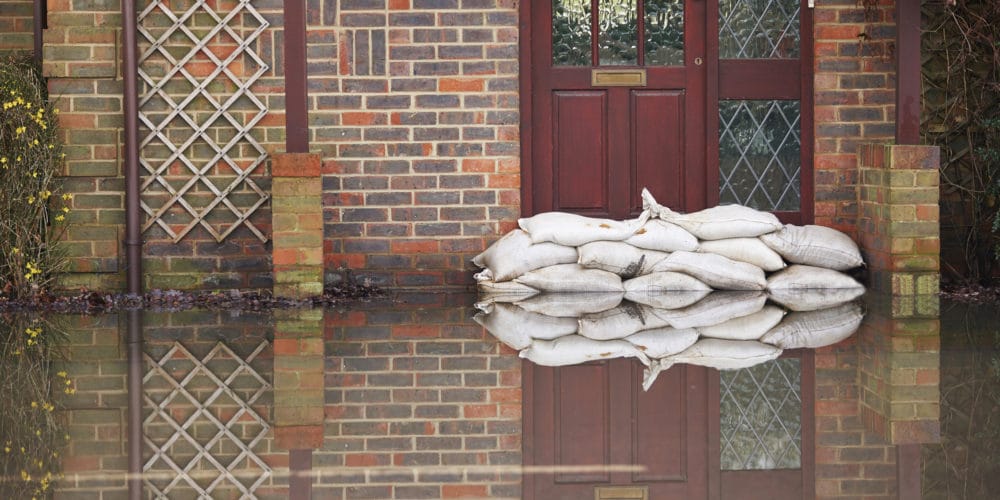
For more than 20 years, I have been supporting communities that are at risk of flooding by providing guidance relating to modern Property Flood Resilience measures and adaptations. I want to show households just what steps can be taken, using tested and proven solutions, to truly lessen the devastating impact flood waters can bring.
During this time, I have however become more and more frustrated at the repeated reliance on the humble yet wildly inefficient (and environmentally unfriendly) sandbags. These continue to be offered to communities at a time of flooding as if they will save the day, and I find it gives people a totally false impression on their effectiveness.
In my book, I consider sandbags to be no more than a ‘comfort blanket’ for when a flood emergency happens. I was recently involved in putting sandbags to an official test at an accredited British Standard Institute testing tank. The first test, with four sandbags placed in front of a household door, failed after just 59 seconds of the water being turned on.
We then tested with 10 sandbags and they held water back for just over two minutes before it infiltrated the area behind the door.
Furthermore, it’s important to look at additional ‘side effects’ of sandbags – sand escapes from them and creates a lot of issues. For example, in our test leaked sand badly blocked the sump pump we used to drain the water out of the testing tank. This also happens in real flood conditions and sand often collects in drains afterwards, rendering them inefficient come the next heavy rainfall.
They really do more harm than good and it frustrates and upsets me to see them continually being used as a go-to solution when they simply don’t work
Sir Michael Pitt’s review into the extensive floods of 2007 was unable to find any considerable evidence that sandbags were particularly effective in safeguarding households. Nevertheless, 15 years on and sandbags are still widely regarded as an important focus for community action.
I have therefore launched a Ban The Sandbag campaign, which encourages the phasing out of general sandbag provision in favour of proven products, such as kite-marked flood boards, air brick covers and other forms of temporary defence.
Sandbags do little more than filter flood water. They are time-consuming to fill and put in situ, are not easy to store, quickly become contaminated by filthy flood water, rendering them completely unusable, and are a challenge to dispose of.
Whilst investment is needed in temporary barriers, the risk of flooding is only increasing and therefore it is time and money well spent; now is the time for people to really see just how ineffective sandbags truly are and to ban them in favour of proven, modern alternatives.
Instead, communities should be made more aware of these proven Property Flood Resilience measures, such as non-return vales, wall membrane systems with accompanying sump pumps, flooring, wall coverings, alternative skirting boards, waterproof plaster and insulation, self-closing air bricks, periscope covers, recoverable kitchens and flood barriers and doors – including those suitable for listed buildings.
Whilst I appreciate some households may struggle to buy property-based flood products, even a homemade marine ply flood board and some good old gaffer tape fixed to door joins would be more effective and environmentally sustainable. I’m happy to offer advice here to anyone looking for assistance.
I will continue to stand firm in my view that sandbags should not be considered a 21st century solution to flooding: the time for change is now. Ban the sandbag!
###
To learn more about Property Flood Resilience, Mary Long-Dhonau has written an E-book and has co-authored several guides including the Homeowners Guide to Flood Resilience and a Property Flood Resilience eBook. Both are free and available to download here: https://marydhonau.com/.
